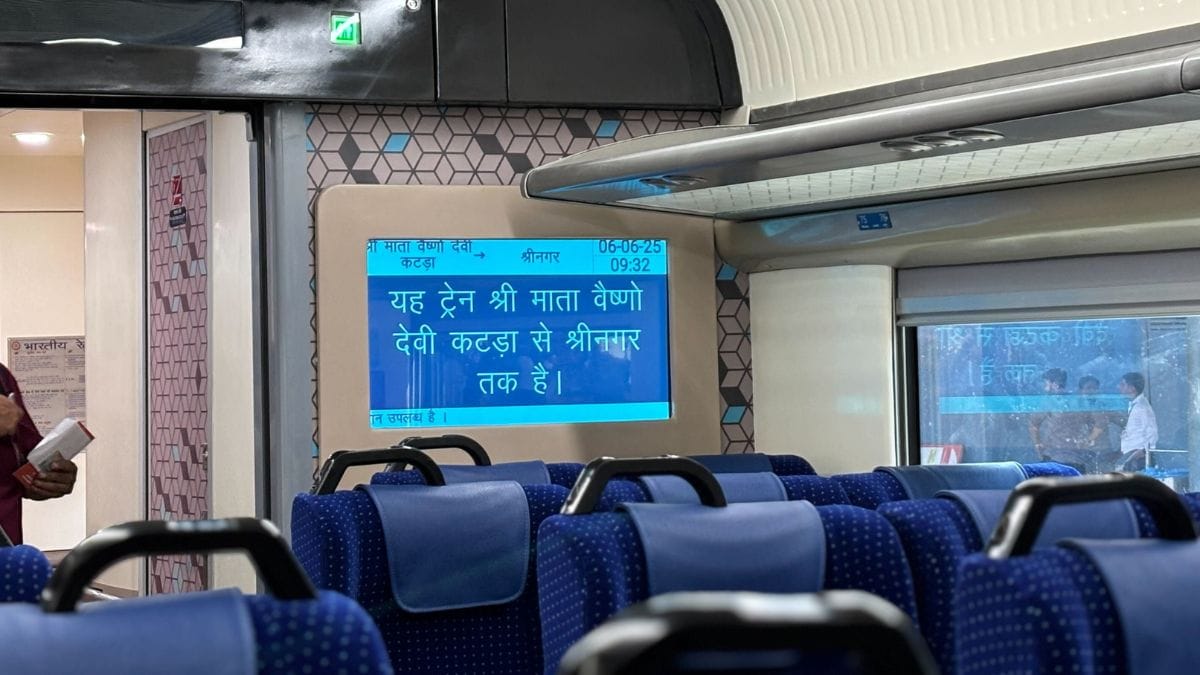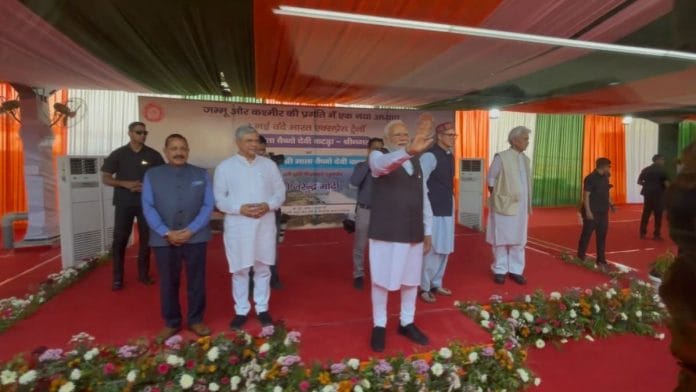Katra, Jammu: With chants of “Jai Shera Wali Da” and “Bharat Mata Ki Jai”, Prime Minister Narendra Modi flagged off the first Vande Bharat Express connecting Jammu to Kashmir Friday.
The rail route, which is part of the Udhampur-Srinagar-Baramulla Rail Link (USBRL), will be open for commercial services starting Saturday.
The new service will not only connect Jammu to Kashmir via a rail link but also Kashmir to the rest of India for the first time. While road and air connectivity already existed, the rail link is significant due to the region’s challenging geography and tough terrain.
The new railway line is expected to significantly reduce travel time between the Jammu region and Srinagar.
The fare for the Katra-Srinagar route is Rs 715 for chair car and Rs 1,350 for executive class.
“This is not just a new railway service but also symbolic of how far the region’s railway network has progressed over the last 11 years,” said Railway spokesperson Dilip Kumar.
“We are witnessing history in the making. This railway line is a marvel, and advanced technology has been used to ensure all-weather connectivity,” he added.

The inauguration comes weeks after the 22 April Pahalgam terror attack in which 26 people were killed. Since then, tourism in Kashmir has seen a massive decline. The rail link is being seen as a step towards restoring normalcy and inviting tourists to revisit the Valley.
“Earlier, there would be no space to walk at Dal Lake because of the massive tourist footfall. Now, we hardly see a few. Hope this railway line will restore normalcy,” said a shawl seller in Srinagar.
Also read: What Indian Railways needs right now—safety more than speed
Cutting travel time
The Vande Bharat Express will take only 3 hours to travel from Katra to Srinagar. By road, the journey used to take around 6-7 hours. For the first time, two Vande Bharat trains will run consecutively—one from Katra and the other from Srinagar—both flagged off by the prime minister.
The prime minister also inaugurated two major engineering landmarks. One is the Chenab Rail Bridge, the world’s highest railway arch bridge, standing 359 metres above the riverbed, 35 metres taller than the Eiffel Tower. It spans 1,315 metres and is part of the USBRL. It is engineered to withstand seismic and wind conditions. Modi waved the national flag as he inaugurated the Chenab bridge.
#WATCH | J&K: Prime Minister Narendra Modi waves the Tiranga as he inaugurates Chenab bridge – the world’s highest railway arch bridge.#KashmirOnTrack
(Video: DD) pic.twitter.com/xfBnSRUQV5
— ANI (@ANI) June 6, 2025
The other is the Anji Khad Bridge, India’s first cable-stayed railway bridge. Located about 80 km from Jammu, it spans the Anji River and has been constructed by Hindustan Construction Company.
The USBRL will cross a stretch of 271 km that includes 36 tunnels and 943 bridges. It has been built at a cost of Rs 43,780 crore.
Before the final launch, several trial runs were conducted. In the last run, army and security personnel boarded the train as it passed over the Chenab Bridge to assess wind resistance and safety protocols. According to officials, the bridge is designed to withstand wind speeds of up to 260 km/h.
(Edited by Sugita Katyal)
Also read: From Pamban bridge to Ram Setu, India’s revolution in regional integration is underway






